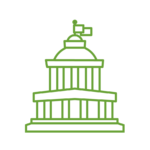Employee Benefits
Requirements for the Surprise Billing Under the No Surprises Act
Requirements for the Surprise Billing Under the No Surprises Act
On July 1, 2021, the U.S. Departments of Health and Human Services (HHS), Labor and the Treasury, as well as the Office of Personnel Management, issued interim final rules for Requirements Related to Surprise Billing; Part I (“Rules”). These Rules implement portions of the No Surprises Act, which was contained in the COVID-19 relief bill signed into law at the end of 2020 (see our article here). The Rules are intended to protect individuals from surprise medical bills. The published version of the regulations is available here.
The agencies indicated that these regulations are part of a series of regulations (thus why they are referred to as “Part I”) that will be issued implementing the No Surprises Act. Future regulations will address other provisions of the law, such as the transparency provisions. The agencies acknowledged that some of these regulations will not be published before the effective date of the various provisions of the law, which for most provisions is the first day of the plan year that begins on or after January 1, 2022. Until guidance is provided, group health plans are expected to comply with the statutory requirements using a reasonable, good faith interpretation of the law.
The Issue Addressed by the Rules
Surprise Billing and Balance Billing
Generally, when a covered individual uses an out-of-network facility or provider, the group health care plan will not cover the entire amount billed. Even if the individual uses a network facility, it is possible that one or more providers working at the facility are not participating in the plan’s network, which can result in the individual being billed for the amount in excess of what the plan will pay.
This can result in a surprise medical bill from a health care provider when a covered person receives medical services from a provider or facility that, usually unknown to the individual, is a non-participating provider or facility with respect to the individual’s coverage. Surprise billing can come from both emergency and non-emergency care.

